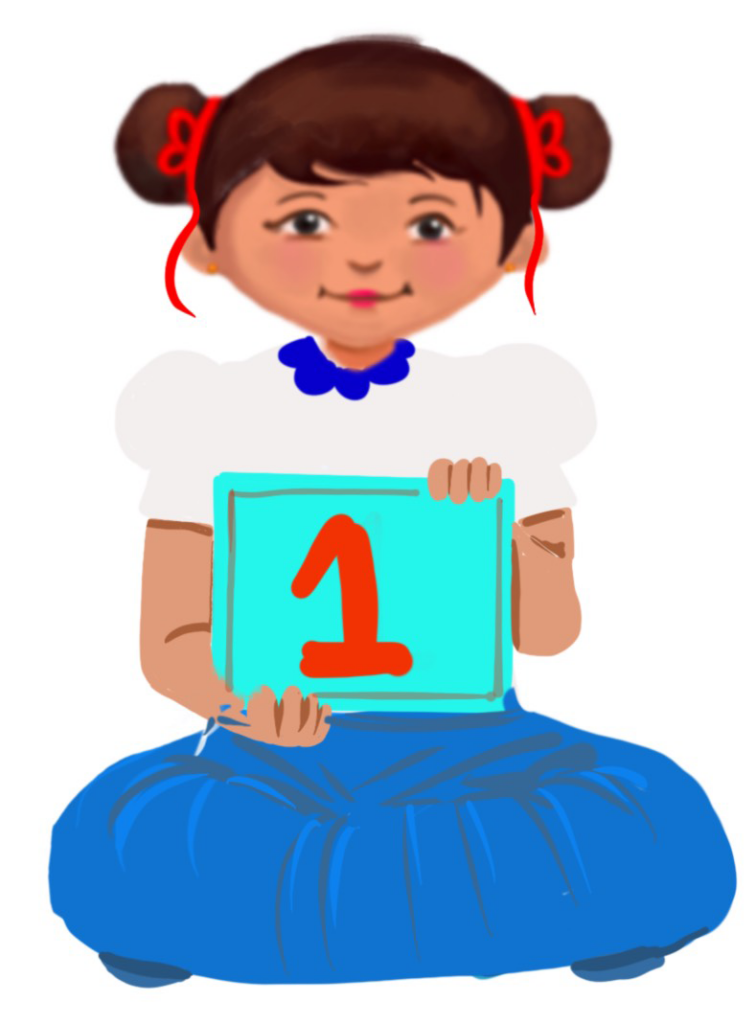
Colouring Wealth from Waste Paper Cap
Class 1
 Objective
Objective
Students will be able to make paper caps reusing old newspapers.
 Prerequisites
Prerequisites
1) Fine motor skills: Students should have developed the ability to use fingers and hands to fold paper or hold a glue stick.
2) Hand eye coordination: Students should be able to coordinate their hand movements with visual perception which is needed for accurately folding or gluing the paper along the designated lines.
3) Attention span: Students should be able to focus on the task given and follow the step by step instructions involved in paper folding.
4) Follow instructions: Students should be able to understand simple verbal or visual instructions, which is essential for learning the folding sequences.
5) Hand strength: Students should have sufficient strength in their hands to fold the paper, make creases or to squeeze the glue stick.
6) Bilateral perception: Students need to use both hands simultaneously to fold the paper and glue the sides.
NOTE: Adaptations, Variation in Rules and Pace are suggested below to develop the above prerequisites.
 Goal
Goal
All
All children can identify paper cap and do the activity themselves or with the help of teachers or peers.
Some
Some children can fold paper as required to make a paper cap.
Few
Few children can learn that wealth from waste is possible.
Operational Definition
All – This gives the goal, which is the minimum that the teacher must achieve for all students in the classroom.
Some – This gives the goal that the teacher may try to achieve for some students in the classroom who can achieve the suggested goal over and above the goal stated for ‘All’.
Few – This gives the goal that the teacher may try to achieve for a few students in the classroom who can achieve the suggested goal over and above the goal stated for ‘Some and ‘All’.
Materials Required for Activity
Old newspaper, glue.
Preparation for Activity
Preparing will help you to conduct an effective activity in an inclusive classroom and achieve the goal.
- Please keep ready old newspapers as required for your Inclusive Classroom. Details of creating these adaptations yourself is provided below.
- Go through the suggestions provided for Variation of Rules and Pace and Adaptations and ensure necessary preparation accordingly.
Preparing will help you to conduct an effective activity in an inclusive classroom and achieve the goal.
Setting for the Activity
This is a classroom activity. All children can work on the old newspaper individually. However, children who need peer support can work with their peers.
Procedure
- Teacher may first show the materials that will be used in this activity.
- Demonstrate how to fold the newspaper and crease
Flashcards: Colour Flashcards
View and DownloadClick and watch the videos. These videos are to be shown to children before the activity. When there are children with hearing impairment in the inclusive class, use the video with Indian Sign Language (ISL)
Video: Wealth from Waste-Paper Cap
ISL Video: Wealth from Waste-Paper Cap
Notes to the Teacher
- Encourage and appreciate the children for their answers.
- Go around the class and ensure that the children are following the instructions correctly at each step.
- The teacher should identify the Hand dominance of the child and encourage the child to do with that hand
- Appreciate and acknowledge children’s effort
Adaptations to address variability in an inclusive classroom
The variability of an inclusive environment needs to address the processing and attention differences among learners. An inclusive environment may include learners with visual impairments, hearing impairments, locomotor impairments and cognitive differences. Learners not only learn in different ways, but also possess unique motivations, interests, personalities and strengths. To address this variability, providing appropriate adaptations is an effective solution.
Adaptations and Strategies: Paper Craft
Suggested Variation in Rules and Pace
When working with special children, it is important to adapt the rules and pace to their specific needs. Here are some suggestions:
- Vary the rules: Depending on the child’s abilities, you can adapt the rules for craft. For example, if the child is not able to handle a large newspaper sheet, you can allow him / her to do the craft in a smaller sheet.
- Vary the pace: Some children may need more time to complete tasks than others. It may be helpful to break up the task into smaller parts, providing regular breaks or alternate activities to avoid frustration or fatigue. Using a timer can help children pace themselves and feel a sense of accomplishment as they work towards completing the task.
- Provide additional support: Provide physical support and guidance as needed, helping the child fold the paper and guide his/her hand to crease the folds.
- Provide positive feedback: It is important to provide positive feedback throughout the craft activity to build the child’s confidence and motivation. Be specific and provide feedback on their effort, progress, and the quality of their work
Human Value Content – Reuse Newspaper
Video: Human Value Song – Reuse Newspaper
ISL Video: Human Value Song – Reuse Newspaper
Poster: Human Value Song – Reuse Newspaper
View and DownloadSocial Narrative – Making Craft
A social narrative is a tool used to help individuals with special needs, particularly those on the autism spectrum, better understand social situations and how to appropriately respond to them. Here is a social narrative about making craft items. The videos can be shown in an inclusive classroom.
Social Narrative (I Can Do Group Activities with My Classmates Coming Soon)
Click to access Social Narrative
Teacher Resource Document
View and Download| Source and Attribution of images All images used in the above Assets and Aids are originally created. |
This digital material has been developed by the Sri Sathya Sai Vidya Vahini Inclusive Education Project, a unit of Sri Sathya Sai Central Trust, Prasanthi Nilayam, as a collaborative offering in the service of our nation.
